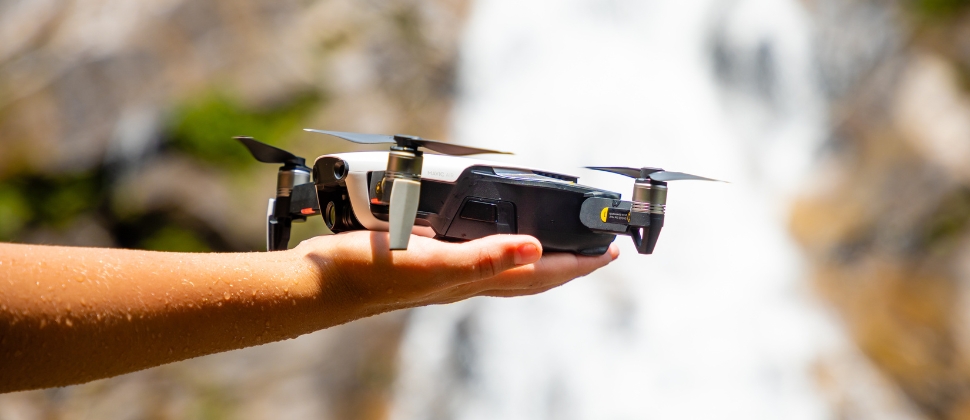In the realm of action photography and videography, capturing moments in low-light conditions presents unique challenges and opportunities. Whether you're an adventure enthusiast, a content creator, or a professional filmmaker, understanding how action cameras perform in low-light scenarios is essential for achieving optimal results. In this comprehensive guide, we'll explore the key considerations when using action cameras in low-light conditions, with a focus on the DJI Air 3 Night Mode.
1. The Importance of Low-Light Performance
Low-light conditions, such as dusk, dawn, or nighttime, often pose challenges for traditional cameras due to reduced ambient light levels. However, for action cameras designed to capture fast-paced and dynamic scenes, low-light performance is crucial for producing clear, sharp, and vibrant images and videos. Whether you're capturing outdoor adventures, sports events, or cinematic sequences, the ability of an action camera to perform well in low-light conditions directly impacts the quality and usability of your footage.
2. Understanding DJI Air 3 Night Mode
The DJI Air 3 is renowned for its advanced features and capabilities, including a dedicated Night Mode that enhances performance in low-light environments. By leveraging innovative technology such as enhanced sensor sensitivity and intelligent image processing algorithms, the DJI Air 3 Night Mode allows users to capture stunning visuals even in challenging lighting conditions. Whether you're shooting still photos or recording video footage, Night Mode optimizes exposure settings to deliver bright, detailed, and noise-free images with minimal graininess.
3. Key Considerations for Low-Light Photography and Videography
When using action cameras in low-light conditions, several factors beyond ISO sensitivity, aperture size, and shutter speed contribute to achieving optimal results.
White Balance Adjustment
White balance adjustment is critical for ensuring accurate color reproduction in different lighting conditions. In low-light environments, the color temperature may vary, affecting the overall color balance of your images and videos. The DJI Air 3 Night Mode offers customizable white balance settings, allowing you to fine-tune color temperature and achieve natural-looking tones, even in challenging lighting situations.
Noise Reduction Technology
Digital noise can significantly degrade image quality, especially in low-light photography and videography. The DJI Air 3 incorporates advanced noise reduction technology that minimizes image noise while preserving fine details and textures. By reducing noise levels in dark areas of the image, Night Mode produces cleaner, more visually appealing results with enhanced clarity and definition.
Dynamic Range Enhancement
Dynamic range refers to the range of tones between the darkest and brightest areas of an image. In low-light conditions, maintaining adequate dynamic range is essential for capturing details in both shadowed and highlighted areas. The DJI Air 3 Night Mode employs dynamic range enhancement techniques to expand the tonal range and preserve detail in high-contrast scenes. This ensures that your low-light images and videos exhibit rich, well-balanced tones with exceptional depth and dimensionality.
4. Tips for Optimizing Low-Light Performance with DJI Air 3
To maximize the low-light performance of the DJI Air 3 and elevate the quality of your photography and videography, consider implementing the following additional tips:
Utilize Light Sources
In low-light environments, incorporating additional light sources can significantly enhance the visibility and clarity of your images and videos. Whether using natural light, artificial lighting, or portable LED lights, strategically positioning light sources can illuminate subjects and create captivating visual effects. Experiment with different lighting techniques to add depth, drama, and ambiance to your low-light compositions with the DJI Air 3.
Post-Processing Techniques
After capturing low-light images and videos with the DJI Air 3, leverage post-processing techniques to fine-tune and enhance the final results. Software tools such as Adobe Lightroom and Photoshop offer a wide range of editing capabilities, including exposure adjustment, noise reduction, and color grading. By refining your images and videos in post-production, you can further optimize their appearance and ensure they meet your creative vision and aesthetic preferences.
Explore Creative Opportunities
Low-light conditions present unique creative opportunities for experimentation and exploration with the DJI Air 3. Whether capturing atmospheric nightscapes, dramatic silhouettes, or dynamic light trails, embrace the challenge of low-light photography and videography as a means of expressing your artistic vision and storytelling prowess. With the DJI Air 3 Night Mode as your creative tool, push the boundaries of conventional imagery and unlock new possibilities for visual expression in low-light environments.
5. Conclusion
In summary, the DJI Air 3 Night Mode offers unparalleled capabilities and versatility for capturing stunning visuals in low-light conditions. By understanding and leveraging the key considerations outlined in this guide, along with additional tips and techniques, you can harness the full potential of the DJI Air 3 to elevate your low-light photography and videography to new heights of creativity and excellence. Whether documenting nighttime adventures, capturing celestial landscapes, or telling compelling stories in the dark, the DJI Air 3 empowers you to create immersive and captivating imagery that resonates with audiences worldwide.





Comments